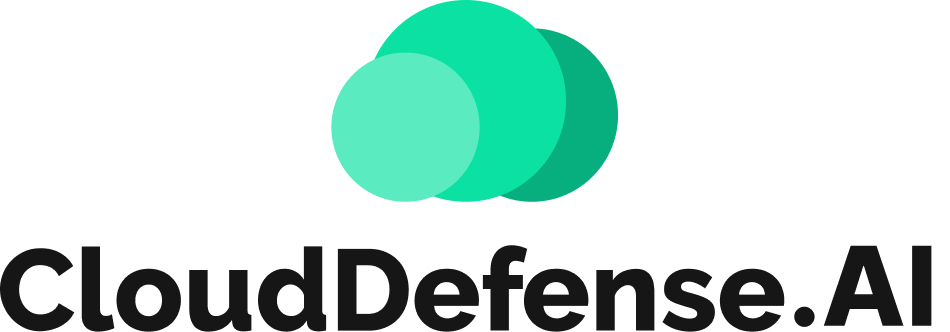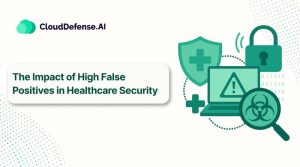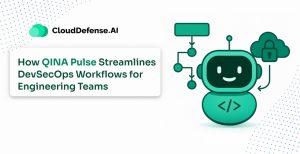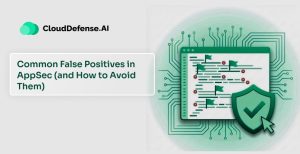Your organization’s sensitive data is likely slipping through the cracks of your cloud infrastructure or being exposed via third-party SaaS applications. The digital age offers us unmatched convenience, but it also presents security challenges that can act as hurdles in your road to success.
Two strategies, cloud security posture management (CSPM) and SaaS security posture management (SSPM), are widely used to combat the threats we mentioned above.
While CSPM focuses on securing your cloud environments, SSPM is dedicated to protecting the SaaS applications integral to your operations. Understanding the differences and synergies between CSPM vs SSPM can help you build a resilient security framework.
What is CSPM?
Cloud Security Posture Management (CSPM) focuses on the ongoing detection and mitigation of risks in cloud environments and services.
It automates the identification and remediation of risks across various cloud services, including Infrastructure-as-a-Service (IaaS), Platform-as-a-Service (PaaS), and Software-as-a-Service (SaaS).
Key Functionalities of CSPM
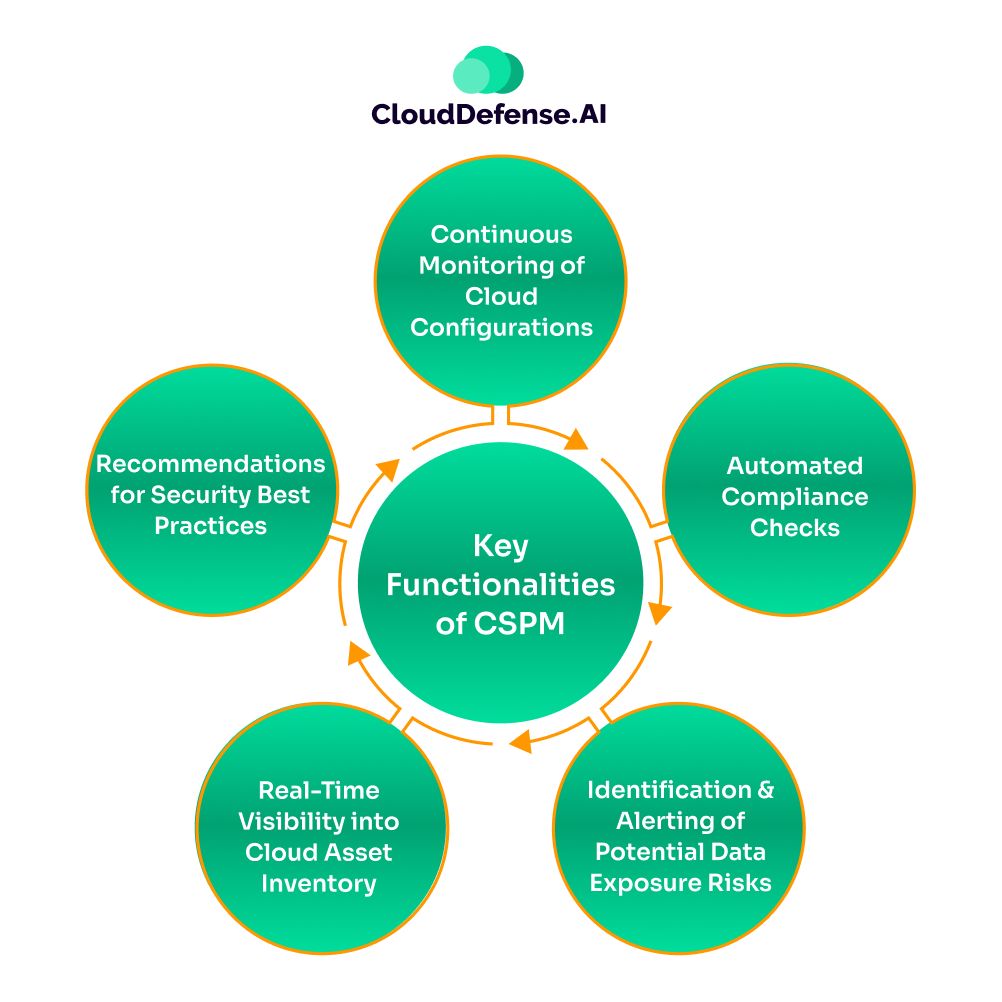
CSPM solutions are designed to enhance the security of cloud environments by providing continuous monitoring and management of cloud configurations. Key features of CSPM solutions include:
- Continuous Monitoring of Cloud Configurations: CSPM tools continuously assess cloud environments to identify security gaps and misconfigurations that malicious actors could exploit.
- Automated Compliance Checks: These solutions automate the process of checking cloud configurations against industry regulatory requirements, ensuring that organizations remain compliant with standards such as GDPR, HIPAA, and PCI-DSS.
- Identification and Alerting of Potential Data Exposure Risks: CSPM tools proactively identify potential data exposure risks, such as publicly accessible storage buckets or databases, and alert security teams to take corrective action.
- Real-Time Visibility into Cloud Asset Inventory: Providing a comprehensive view of all cloud assets, CSPM solutions offer real-time visibility into the organization’s cloud infrastructure, enabling better management and security oversight.
- Recommendations for Security Best Practices: CSPM tools offer tailored recommendations to help organizations implement security best practices specific to their cloud setups, enhancing overall security posture.
By incorporating these features, CSPM solutions assist organizations in maintaining a robust security posture within their cloud environments.
Benefits of Implementing CSPM
- Enhanced Security Posture: By identifying and mitigating risks, CSPM strengthens an organization’s overall security stance, reducing the likelihood of data breaches.
- Operational Efficiency: Automated detection and remediation capabilities minimize the need for manual intervention, allowing IT teams to focus on strategic initiatives.
- Improved Visibility: CSPM provides comprehensive insights into cloud assets and their configurations, enabling organizations to maintain a clear understanding of their security landscape.
CSPM is essential for organizations that leverage cloud services. It offers automated tools to maintain security, ensure compliance, and optimize cloud operations.
What is SSPM?
SaaS Security Posture Management (SSPM) is a cybersecurity approach designed to continuously monitor and manage the security configurations of Software-as-a-Service (SaaS) applications.
As organizations increasingly rely on SaaS solutions like Microsoft 365, Salesforce, and Slack, ensuring these platforms are securely configured becomes essential for protecting sensitive data and maintaining compliance.
Key Functionalities of SSPM
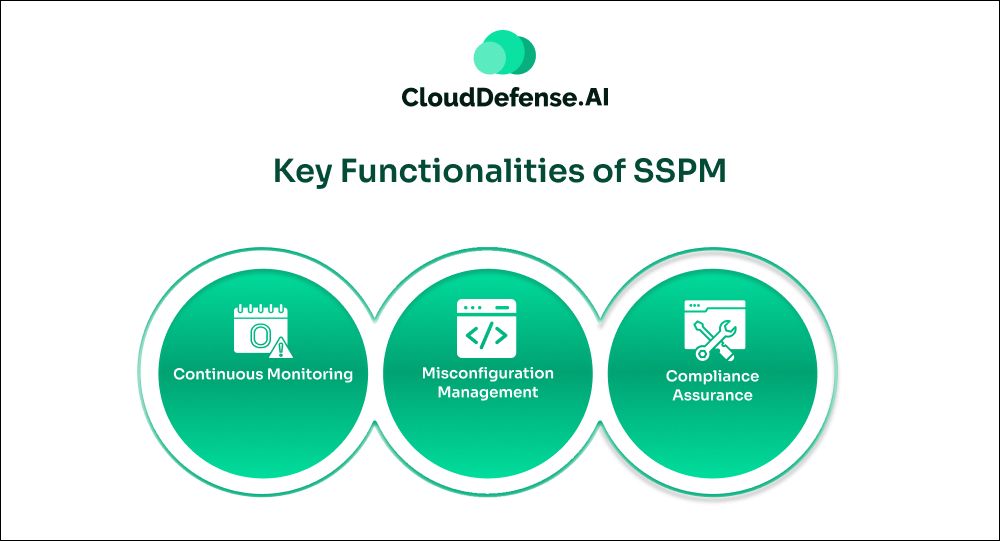
- Continuous Monitoring: SSPM tools provide real-time surveillance of SaaS application configurations, promptly detecting any deviations from established security policies.
- Misconfiguration Management: By identifying and addressing misconfigurations—such as overly permissive access controls or unsecured data sharing settings—SSPM reduces potential vulnerabilities that malicious actors could exploit.
- Compliance Assurance: SSPM solutions help organizations adhere to industry standards and regulatory requirements by continuously assessing SaaS environments against frameworks like CIS Benchmarks, GDPR, and HIPAA.
Benefits of Implementing SSPM Solutions
- Enhanced Security Posture: By proactively identifying and mitigating risks, SSPM strengthens an organization’s overall security stance, reducing the likelihood of data breaches.
- Operational Efficiency: Automated detection and remediation capabilities minimize the need for manual intervention, allowing IT teams to focus on strategic initiatives.
- Improved Visibility: SSPM provides comprehensive insights into SaaS assets and their configurations, enabling organizations to maintain a clear understanding of their security landscape.
SSPM is essential for organizations that use SaaS applications. It offers automated tools to maintain security, ensure compliance, and optimize SaaS operations.
Key Differences Between CSPM and SSPM
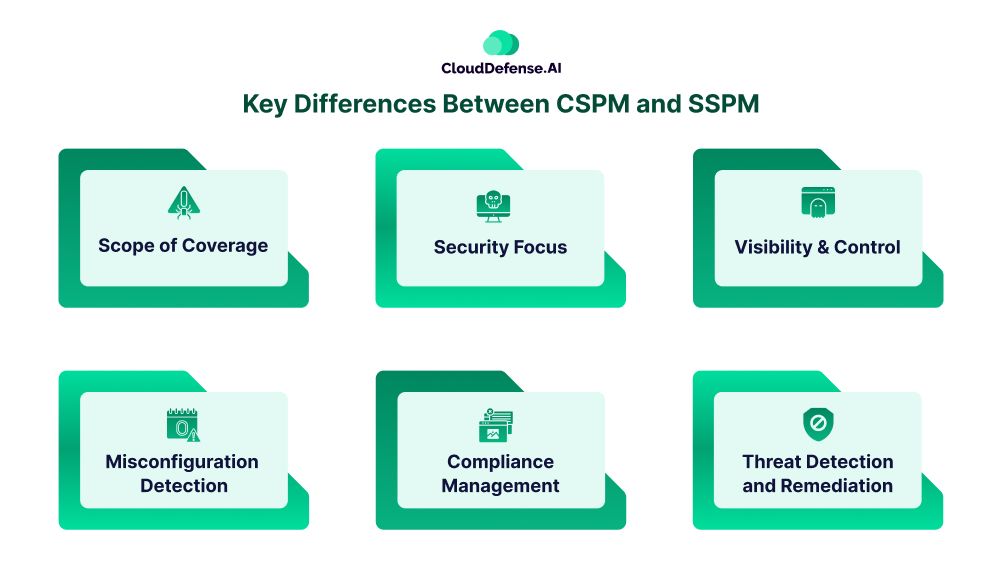
CSPM and SSPM are both essential for securing modern cloud environments, but they focus on different areas. Here’s how they compare:
Scope of Coverage
- CSPM secures cloud infrastructure platforms such as AWS, Azure, and Google Cloud, ensuring that cloud workloads and services follow best security practices.
- SSPM protects SaaS applications like Microsoft 365, Slack, and Salesforce by monitoring misconfigurations, access controls, and security policies.
Security Focus
- CSPM identifies and mitigates risks within cloud infrastructure, such as open storage buckets, misconfigured IAM permissions, and insecure network settings.
- SSPM addresses threats in SaaS applications, including unauthorized access, overprivileged user accounts, and risky third-party integrations.
Visibility and Control
- CSPM provides unified visibility into cloud risks across multiple providers, allowing organizations to apply security policies consistently across all cloud environments.
- SSPM helps organizations gain visibility into their SaaS applications and user accounts, making it easier to manage permissions and detect unused or risky apps.
Misconfiguration Detection
- CSPM detects issues like exposed infrastructure, unsafe network traffic, and missing authentication controls (e.g., lack of MFA).
- SSPM identifies security gaps such as overprivileged users, exposed SaaS data, and weak authentication configurations.
Compliance Management
- CSPM ensures that cloud environments adhere to compliance standards such as CIS Benchmarks, GDPR, and HIPAA by continuously auditing configurations.
- SSPM ensures SaaS applications meet regulatory requirements, enforcing security policies that align with industry frameworks.
Threat Detection and Remediation
- CSPM provides real-time monitoring of cloud accounts, detecting anomalous activity and applying automatic security controls to prevent threats.
- SSPM continuously scans SaaS applications for security risks, offering automated recommendations and remediation actions to maintain a secure SaaS environment.
Organizations managing cloud infrastructure should prioritize CSPM, while those heavily reliant on SaaS applications should implement SSPM to mitigate risks effectively. We will also discuss which one you should prioritize more and whether you can use both together.
CSPM vs SSPM Comparison Table
This table will make it easier for you to see the key differences between CSPM and SSPM at a glance.
| Feature | CSPM (Cloud Security Posture Management) | SSPM (SaaS Security Posture Management) |
| Scope | Cloud infrastructure, IaaS, and container security (AWS, Azure, Google Cloud) | SaaS applications (Microsoft 365, Slack, Salesforce, Google Workspace) |
| Primary Goal | Securing cloud environments by monitoring misconfigurations and enforcing best practices | Securing SaaS applications by managing user permissions, configurations, and data exposure |
| Visibility & Control | Provides visibility into cloud infrastructure risks and misconfigurations across multiple cloud providers | Provides visibility into SaaS application security settings, user access, and potential risks |
| Security Focus | Identifies risks like open storage buckets, misconfigured IAM permissions, and network security gaps | Detects unauthorized access, excessive permissions, and risky third-party integrations in SaaS apps |
| Misconfigurations Detected | Exposed cloud resources, unsafe network configurations, missing MFA, overly permissive IAM roles | Overprivileged user accounts, misconfigured SaaS security settings, lack of proper access controls |
| Threat Protection | Monitors cloud accounts in real-time, detects anomalies, and applies automated security controls | Detects SaaS app misconfigurations in real-time, provides automated recommendations and remediations |
| Compliance Management | Ensures adherence to CIS Benchmarks, GDPR, HIPAA, and other cloud compliance standards | Helps organizations meet SaaS security requirements and regulatory frameworks |
| Best For | Organizations managing cloud workloads that need continuous security monitoring and compliance enforcement | Organizations using multiple SaaS applications that require visibility into access control and security posture |
Do You Need CSPM or SSPM?
Deciding between CSPM and SSPM largely depends on your organization’s cloud footprint, SaaS usage, and compliance needs. However, if you’re considering CloudDefense.AI’s CNAPP, note that it delivers robust Cloud Security Posture Management (CSPM) capabilities—but it does not currently include dedicated SaaS Security Posture Management (SSPM).
Assess Your Environment
- Heavy Cloud Footprint: If your organization primarily relies on cloud infrastructure (e.g., AWS, Azure, Google Cloud), CSPM is crucial for identifying misconfigurations, securing identities, and automating compliance checks.
- Extensive SaaS Adoption: If SaaS applications like Microsoft 365, Salesforce, or Slack form the core of your operations, you might need a separate SSPM solution to protect sensitive data and manage access controls effectively.
Evaluate Your Requirements
- Regulatory and Compliance Needs: CSPM aligns well with frameworks like CIS Benchmarks, GDPR, and HIPAA. For SaaS compliance, SSPM tools are typically needed.
- Team Resources and Organizational Maturity: If your security team is experienced in managing cloud configurations, CSPM via CloudDefense.AI can cover your infrastructure security. Otherwise, consider a specialized SSPM tool if SaaS security is a major concern.
Best Practice: Use CloudDefense.AI’s CNAPP
While CSPM and SSPM naturally complement each other for complete cloud security, if you’re using CloudDefense.AI CNAPP, you’ll already benefit from its state-of-the-art CSPM capabilities.
Moreover, CloudDefense.AI’s suite, featuring tools like the Cloud Workload Protection Platform (CWPP), Data Security Posture Management (DSPM), and Cloud Infrastructure Entitlement Management (CIEM), can adequately substitute for dedicated SSPM functionality.
These integrated tools help secure SaaS application environments by monitoring data, managing access, and ensuring compliance. They deliver comprehensive protection across your entire infrastructure without the need for a separate SSPM solution.
Why Choose CloudDefense.AI for CSPM?
CloudDefense.AI offers a cutting-edge CSPM solution that delivers comprehensive, real-time cloud security while simplifying management and ensuring compliance. Here’s why it stands out:
Comprehensive Cloud Security
Continuous monitoring of cloud configurations identifies misconfigurations and vulnerabilities before they become critical issues. Automated remediation ensures your cloud environment stays secure with minimal manual intervention.
Unified, Agentless Architecture
Rapid deployment without the need for agents minimizes performance impact. A centralized dashboard provides clear, consolidated visibility across multi-cloud environments such as AWS, Azure, and GCP.
Actionable Insights & Prioritization
Detailed, prioritized alerts help your team focus on the most critical risks first. Clear recommendations and contextual data guide swift, effective response.
Robust Compliance Management
Supports over 20 industry frameworks and custom policies to help you meet regulatory requirements effortlessly. Automated compliance reporting simplifies audits and reduces the burden on your security team.
Enhanced Operational Efficiency
Smooth integration into existing workflows improves productivity and reduces complexity.
In short, CloudDefense.AI’s CSPM solution not only strengthens your cloud infrastructure but also makes it easy to manage security, making it the ideal choice for organizations looking to defend their digital assets effectively.
Ready to transform your cloud security? Book a demo today!
